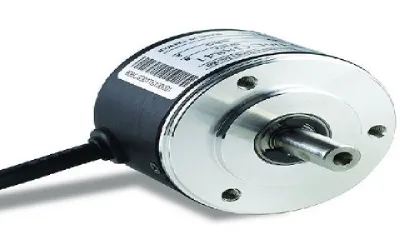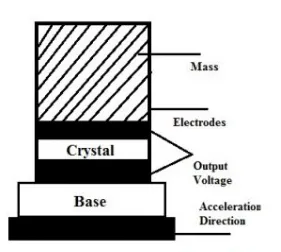Active Transducer:Overview,Principle and Applications
The transducer is an electrical device primarily designed to convert a physical quantity into an equivalent electrical signal. In most electrical systems, the input is an electrical signal. However, using electrical techniques, a non-electrical signal can be transformed into its equivalent electrical signal. Essentially, the block diagram of a transducer consists of two components: the sensing element and the transduction element. A thermocouple serves as an excellent example of a transducer, as it generates a voltage corresponding to the heat at the junction of two different metals. Transducers are categorized into two types: active transducer and passive transducer.
What is an Active Transducer?
Definition: A transducer that converts non-electrical quantities into electrical quantities is known as an active transducer. Examples of non-electrical quantities include pressure, temperature, and light illumination. Consequently, there are various types of active transducers based on the specific non-electrical quantity being measured. Please refer to this link to learn more about the differences between an active transducer and a passive transducer.

This transducer doesn’t require an additional source. Its design is simple, and it has low resolution. The best examples are Thermocouple, Tachogenerator, and PV cell.
Active Transducer Working
A prime example of an active transducer is the Piezo electrical crystal. The main property of this crystal is to generate output voltage when an external force is applied. The crystal is placed between two metallic electrodes. When the external force is applied to the crystal, voltage is induced across it. This is how the transducer works.

Types of Active Transducer
There are three types of active transducers:
- Piezo Electric
- Photo Electric
- Thermo Electric
- Piezo Electric Transducer
It is a type of active transducer designed to generate an electrical quantity equivalent to the applied pressure input. Quartz, Rochelle salts, and Tourmaline are three substances that exhibit the piezoelectric effect.
Piezoelectric Transducer
Working Principle: Piezoelectric transducers utilize the piezoelectric effect, where certain materials generate an electric charge when subjected to mechanical stress or pressure. Conversely, applying an electric field to these materials causes them to deform or generate mechanical vibrations.
Operation: Applying mechanical stress to the piezoelectric material induces an electric charge across its surface, resulting in an electrical signal. Conversely, applying a voltage to the material leads to mechanical deformation or vibrations.
Applications: Piezoelectric transducers are used in various applications, including:
1. Ultrasound Imaging: Used for generating and detecting ultrasound waves in medical imaging.
2. Sensors: Employed in pressure sensors, accelerometers, and vibration sensors.
3. Actuators: Utilized as piezoelectric actuators for precise positioning and control.
4. Energy Harvesting: Convert mechanical vibrations into electrical energy.
Photoelectric Transducer
Working Principle: Photoelectric transducers convert light energy into electrical energy using the photoelectric effect, where certain materials emit electrons when exposed to light.
Operation: Incident light on the photoelectric material causes emission of electrons, generating an electric current. The magnitude of this current corresponds to the intensity of the incident light.
Applications: Photoelectric transducers are applied in various fields, such as:
1. Photovoltaic Cells: Used in solar panels to convert sunlight into electricity.
2. Photodiodes: Serve as light sensors in devices such as cameras and optical communication systems.
3. Photoresistors: Light-sensitive resistors utilized in automatic lighting systems and light meters.
Thermoelectric Transducer
Working Principle: Thermoelectric transducers utilize the Seebeck effect, where a voltage difference is generated due to a temperature gradient between two different materials.
Operation: A temperature difference between the two ends of the thermoelectric material (junction) results in the generation of a voltage. This voltage can be measured as an electrical signal.
Applications: Thermoelectric transducers are employed in various applications, including:
1. Temperature Measurement: Thermocouples are utilized for temperature sensing in industrial processes, HVAC systems, and scientific experiments.
2. Energy Conversion: Thermoelectric generators convert heat differentials into electrical energy, commonly used in space missions and remote power sources.
Difference Between the Active and Passive Transducer
|
Active Transducer |
Passive Transducer |
|
This type of transducer generates voltage or current output autonomously, without requiring external power sources. |
This type of transducer undergoes changes in its internal parameters like capacitance, resistance, and inductance when it interacts with passive elements, thereby altering signals even with minimal inputs. |
|
Its operational mechanism involves extracting energy from the source being measured. |
Its operational principle involves utilizing energy from external sources, resulting in changes in its physical characteristics. |
|
It possesses an autonomous power source for its operation. |
Its operation requires an external power source. |
|
Its design is notably simpler compared to Passive Transducers. |
Its design shows a higher level of complexity compared to an Active Transducer. |
|
The smallest pressure variation detectable in its output is minimal, indicating a low resolution capability. |
It can easily and accurately detect subtle output changes, indicating a high resolution capacity. |
|
The output of active transducers depends on the signal used for measurement. |
The output of passive transducers is affected by the signal obtained from an external power source. |
|
These types of transducers are occasionally referred to as self-generating transducers because they operate independently without needing an external power source. |
These are also known as externally energized transducers because they depend on an external power source to perform their functions. |
Classification of Transducer
Based on Principle of Operation
Active Transducers
Active transducers are devices that require an external power source to operate and generate an output signal proportional to the input quantity being measured. They typically involve converting energy to produce the output signal.
Passive Transducers
Passive transducers are devices that directly produce an output signal in response to the input quantity without relying on an external power source. They generally utilize a change in a physical property to generate the output signal.
Based on Application
Pressure Transducers
Pressure transducers are essential for measuring pressure changes and converting them into electrical signals.
Temperature Transducers
Temperature transducers play a critical role in measuring temperature variations and converting them into electrical signals.
Level Transducers
Level transducers are crucial for measuring fluid levels and converting them into electrical signals.
Position Transducers
Position transducers measure position or displacement and convert it into electrical signals.
Biomedical Transducers
Biomedical transducers are specialized for medical applications, converting biological parameters into electrical signals for diagnosis and monitoring.
Based on Output Signal
Analog Transducers
Analog transducers produce continuous output signals that smoothly vary within a specific range in response to changes in the input physical quantity.
Digital Transducers
Digital transducers generate discrete output signals with distinct levels or states, typically represented using binary code.
Active Transducer Examples
Thermocouples
Thermocouples are active transducers that convert temperature differences into voltage signals. They consist of two different metal wires connected at one end (junction). When there is a temperature difference between the connected and free ends, it generates a voltage due to the Seebeck effect. This voltage is proportional to the temperature difference and is measured as an electrical signal.
Piezoelectric Sensors
These sensors generate an electrical charge when subjected to mechanical stress or pressure. Certain materials inside piezoelectric sensors, such as quartz crystals or ceramics, produce electric charges in response to applied mechanical force. This charge is then measured as an electrical signal, making these sensors valuable for pressure and vibration measurements.
Photovoltaic Cells (Solar Cells)
Photovoltaic cells convert light energy directly into electrical energy. When photons from light interact with the semiconductor material in the cell, they generate a voltage across the cell's terminals. This voltage can be harnessed as an electrical signal, and photovoltaic cells are widely used in solar panels for power generation.
Microphones
Active microphones use an external power supply to amplify weak electrical signals generated by sound waves. Sound waves cause a diaphragm in the microphone to vibrate, producing an electrical signal. This signal is then amplified to produce an output corresponding to the original sound.
Hall Effect Sensors
These sensors detect changes in magnetic fields and produce a voltage output proportional to the strength of the magnetic field. They operate on the Hall effect, where a current-carrying conductor placed in a magnetic field experiences a transverse voltage. This voltage can be measured and used as an electrical signal in various applications, including position sensing and current measurement.
Accelerometers
These sensors detect acceleration and produce electrical signals corresponding to changes in motion. They commonly employ piezoelectric elements or capacitive structures that respond to acceleration changes. The resultant electrical signal can be analyzed to determine the device's movement and orientation.
Pressure Transducers
Active pressure transducers convert variations in pressure into electrical signals. They utilize various mechanisms such as piezoelectric crystals, strain gauges, or capacitive elements to convert pressure into a measurable voltage or current.
Photoelectric Sensors
These sensors detect the presence or absence of objects using light. They typically consist of an emitter that generates light and a receiver that detects its reflection or absence. The receiver generates an electrical signal indicating whether the object is present or absent.
How to Select a Transducer?
When selecting a transducer, the following factors should be taken into consideration:
- The transducer should have low output impedance and high input impedance to avoid loading effects.
- It must be accurate and free from errors.
- It should be able to withstand shocks, pressure, vibrations, etc.
- The transducer should have good resolution.
- It must be capable of operating in acidic environments.
- It should be sensitive to the required signal and insensitive to unwanted signals.
- The transducer should be compact in size.
- A good transducer should be small, lightweight, highly sensitive, and cost-effective.
FAQs
1). What are the types of transducers?
There are two types: active and passive transducers.
2). What are the types of transducers based on electrical phenomena?
They include resistive, capacitive, inductive, photoelectric, and photovoltaic.
3). What are the requirements of a good transducer?
A good transducer should be small in size, lightweight, low-cost, and highly sensitive.
4). What is the main difference between active and passive transducers?
Active transducers generate output without using an external power source, while passive transducers require an external power source.
5). What is a passive transducer?
A passive transducer converts non-electrical energy into electrical energy using an external power source.
6). Is RTD an active device or passive device?
RTD is a passive device.
7). Which device is known as a self-generating transducer?
An active transducer is known as a self-generating transducer because it produces its own current or voltage.
Thus, this concludes an overview of the active transducer. Transducers play a crucial role in various fields like control engineering and instrumentation by converting non-electrical energy into electrical energy. Here's a question for you: What is a passive transducer?
Related Articles
What is a Piezoelectric Transducer?Features, Specification and Applications
Flexible Sensor Complete Guide
Temperature Sensor Selection: Types & Design Techniques Analysis
Robot Sensor : Principle and Its Applications
What are Wireless Sensor Networks : All Explained
What is Optical Sensor ? Overview and Applications
Tilt Sensor Technology: Types, Advantages & Applications
What Steering Angle Sensor is :Principle,Features and Applications
ACS712 Current Sensor:Principle,Features and Applications
Tantalum vs Ceramic Capacitor: What's the Differences?
What is a Fusible Resistor? [Everything You Need to Know]










